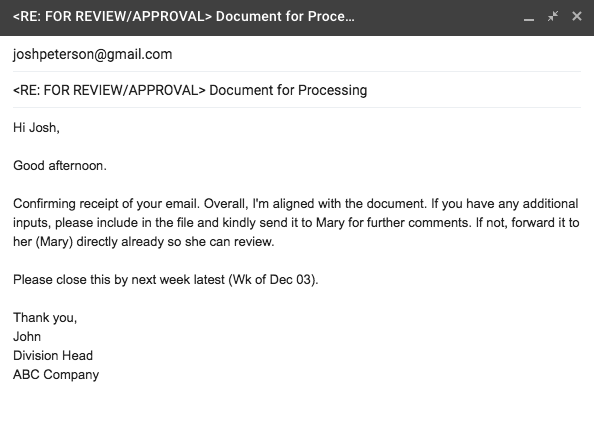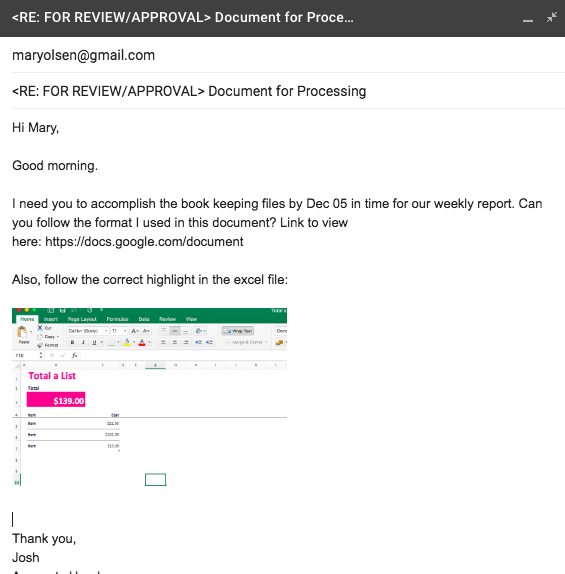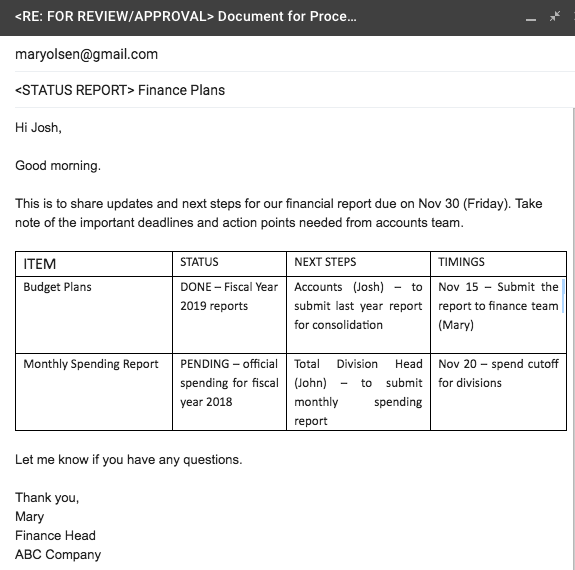Email is not going anywhere.
Despite the rise of different forms of communication, email remains one of the most important methods of messaging for personal and business use.
In 2017 alone, there are roughly 3.7 billion active email users across the globe. This figure is expected to still rise to 4.1 billion by 2021 – that’s half the world’s current population. It will remain the main tool in team collaboration globally. A lot of employers count “good business writing and email skills” as an important requirement before applying for a position in their companies.
Email writing skills is paramount not just for you but for the entire team as a whole. For this article, you’ll learn how you can make your emails better and write them more effectively to improve your communication and ultimately, make your team work together like a well-oiled-machine!
But first – we need to understand why it matters.
Why Excellent Email Skills Makes for Better Teams
On average, most employees will spend over ¼ of their time (almost 11 hours) in their entire work week reading, replying and crafting the right emails and coordinate with the people at the other end of the thread.
A lot of our time is invested in coordination and collaboration. By improving our communication with our team members, we can spend less time in making mistakes and more time getting things done. A well-crafted email will help people capture and understand directions easily. You’ll also avoid unnecessary back and forth for points of clarifications.
The key is to avoid information overload and make the entire process less painful. You don’t want your team mate (who may be working remotely) to come all the way to you just to clarify what you just sent right?
In the following email writing tips, we’ll be discussing how you can ensure readability, prevent back-forth and improve accountability within your team.
Let’s begin!
Hack #1: Assign tasks easily by identifying the 3 Ws
When writing an email – make sure it captures the 3 Ws which is mainly – Who, What and When.
Be upfront on WHO the email is for and from. Be transparent so that the receiving party will understand if they are to take action or not. This is done by your email header or by clearly pointing out which part of the email body the message is for. Indicate it clearly by placing them in the “TO” section. Don’t forget that “CC” or “carbon copy” denotes that the email recipient is just copied in the mail but is not necessarily expected to take action.
Next, say WHAT you want to say. Be very direct to the point and avoid the mambo jumbo. By being succinct, you’ll not only make it easier for the recipient to read your email, you’ll also find that your writing is punchier and has more impact. Specify the necessary requirements that you want. Be clear on the action point that the other user has to do. The key guideline here is to answer in advance all and any questions the receiver will have in mind. Make it very detailed oriented if necessary.
Lastly, be on point on WHEN you expect the action point is needed to be accomplished or what is your expected date of reply. Have timelines and set timings. If you can, indicate a time table on what needs to be done. The intent is to ensure that the other party understands how urgent one’s email that comes in. This makes each side accountable for the deadlines you need. Make sure that you get a confirmation from the other party that they are aligned with the timings you shared. Don’t just expect that the other party will take it into consideration. Get a resounding “YES” or adjust accordingly.
Here’s an example that ticks all the boxes:

Hack #2: Use “If-Then” statements
Do you find yourself in a constant stream of unending discussions? If you find yourself getting sucked into a long, stressful, ping-pong barrage of emails – end it with an “If-then” statement. Don’t treat your email like a usual chat thread. If-Then statements anticipate the other sides need and allows you to fast track your conversations.
For example, look the at email response below:

Use “If-then” statements to prepare back-up plans, clear out any confusion and finalize decisions. Being proactive ends the conversation and makes it more efficient.
Hack #3: Use media tools (images, videos, screenshots)
Show them instead of telling them. By using media tools such as images, videos and screenshots, you’ll be making it easier for the other party understand what you mean. For example, if you want to give very specific technical questions, it’s better to include a visual of how it’s done. If you want someone to take note of an important interview, send them a YouTube link.

Highlight important matters using media but ensure that you don’t overload it too much. Heavy emails take longer to send and receive. If you need to send out huge files, use WeTransfer, Google Docs, OneDrive etc. These tools will make it easier for the other recipient to open your emails and avoid them from landing in SPAM. Keep it tight and light.
Hack #4: Present options and define your recommendation
Don’t ask too much questions or worse – don’t ask open-ended questions. This is the worse culprit of indecision and makes your emails look like a debate regional competition. When you need to get an approval, present options and highlight your recommendation. Express your reasons for giving out that preference. You need to highlight good points and why your vote of confidence speaks to your decision.
Hack #5: Create templates
Your emails don’t have to be unique all the time. You can make a template. This will make your email process faster and easier. Do this for weekly and monthly updates or status reports – anything repetitive. By saving up email formats, you’ll be spending more time working than sending out routine and expected emails. Here’s an example below of a well-crafted status report:

If you want to take it up a notch, use delay delivery. It allows you write your emails now and just send them at the appropriate time when needed. It allows you to send emails when the other side is really expecting them and are most likely to read them.
Lastly, if you’re out of the office, take advantage of auto-reply to craft an Out-Of-Office (OOO) notice. When writing an OOO notice, be clear on your leave dates and who will be the next person who can fit in your shoes. This gives the other side an expectation that you won’t be able to answer your emails during that period. In short, it gives you insurance in case of urgent requirements. Here’s some examples of those emails you can copy.
Hack #6: Why follow-up is more important
Nothing is more frustrating than sending a well-crafted and written email – only to receive no reply! Don’t hesitate to email them back. Follow-ups are crucial to get the recipient’s attention and call them out what needs to be taken next. A great follow-up email gets the other user on track and back on the keyboard to write a response. Here are some great templates that you may use to get started.
Hack #7: Make it scannable
Make it easy for other people to review your emails by keeping everything organized. Don’t just write them in paragraph form. Identify opportunities to make everything concise and scannable. Use bulletpoints, subheadings and white space to give bigness to certain words and phrases. Draw attention to important deadlines and action points by using highlights, font colors, bold or underlines.
Sometimes, email formation makes the entire email readable even though there are too many things you are trying to say or get feedback from.
Similarly, never-ever use acronyms. Spell them out as much as possible. Don’t make any assumptions that the other party understands what you are saying.
Hack #8: Review and Rewrite 101
Make sure you review your emails at least once before sending it. Do a standard content check. Review facts, spelling corrections and clarify unclear details. Don’t depend on the recall function to save yourself. At the onset, avoid sending an email that you haven’t reviewed.
While you should try to avoid lexical or grammar errors in your email, not everyone is super knowledgeable when it comes to language. If you’re not confident with your writing, don’t hesitate to ask for help from professionals, for instance, from Ivory Research or some other expert services.
Takeaways
So, there you have it! Keep these hacks in mind so you can develop amazing emails that make it easier for your team to communicate without the stress and delays. Open communication makes for amazing results. Similarly, using the right tools like Fleep can make this happen. Fleep makes it easy for you to communicate easily and it also synchronizes with other communication tools like email. Want to communicate with your team easily? Sign up for Fleep now!
Happy writing!
Further Reading:

